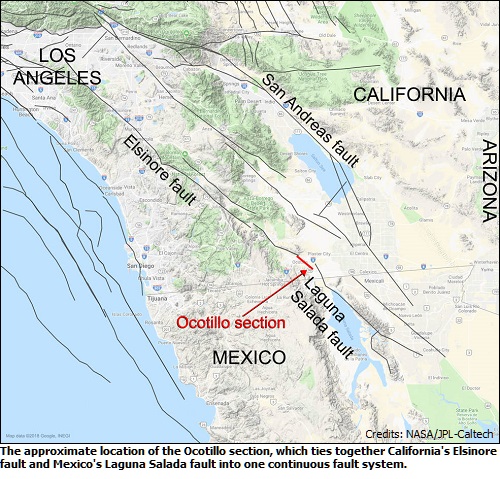
|
|

|
|
| April 26, 2024 |
|
NASA study connects Southern California, Mexico faults 
PASADENA – (INT) - A multiyear NASA study has uncovered evidence that a 21-mile-long section of a fault links known, longer faults in Southern California and northern Mexico into a much longer continuous system. The entire system is at least 217 miles long.
A team led by scientist Andrea Donnellan of NASA's Jet Propulsion Laboratory in Pasadena, California, recognized that the south end of California's Elsinore fault is linked to the north end of the Laguna Salada fault system, just north of the international border with Mexico. The short length of the connecting fault segment, which they call the Ocotillo section, is consistent with an immature fault zone that is still developing, where repeated earthquakes have not yet created a smoother, single fault instead of several strands. The Ocotillo section was the site of a magnitude 5.7 aftershock that ruptured on a 5-mile-long fault buried under the California desert two months after the 2010 El Mayor-Cucapah earthquake in Baja California, Mexico. The magnitude 7.2 earthquake caused severe damage in the Mexican city of Mexicali and was felt throughout Southern California. It and its aftershocks caused dozens of faults in the region, including many not previously identified, to move. Seismic activity in the region is a sign of its complex geology. The Pacific and North American plates are grinding past each other in Southern California. In the Gulf of California, there's a spreading zone where plates are moving apart. "The plate boundary is still sorting itself out," Donnellan said. Story Date: October 23, 2018
|